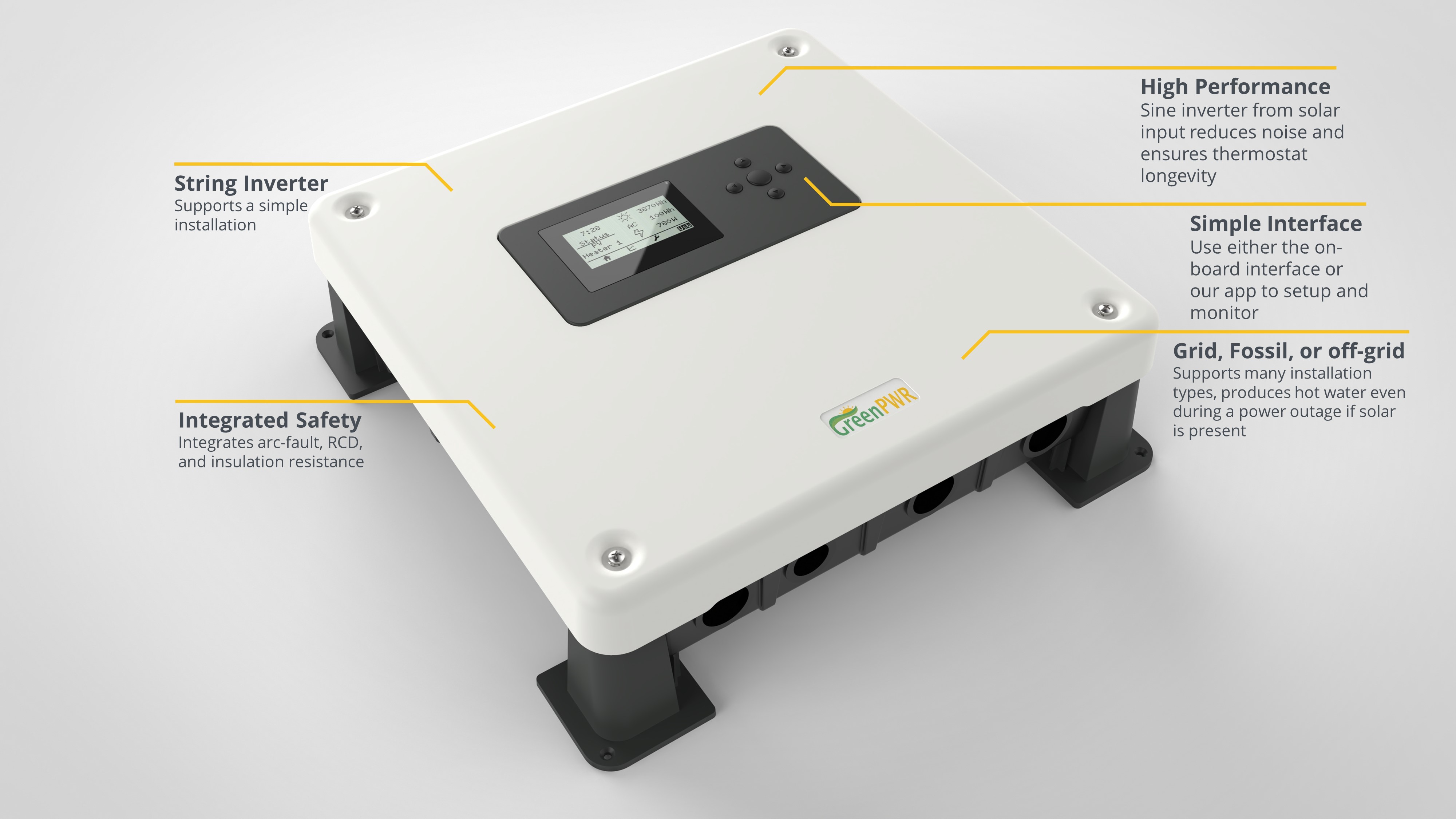Meet the SunHopper™-D

Hot Water Efficiently
Easy Installation
Wireless Monitoring
Configurable
A new solar hot water system. Coming soon, the SunHopper-D generates domestic hot water using a dedicated PV array. This creates a very reliable, low cost system to help reduce energy consumption by offsetting energy use from a backup energy source to PV.


